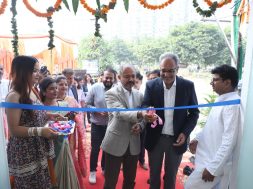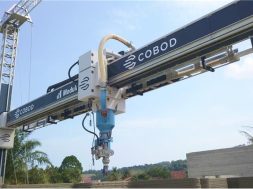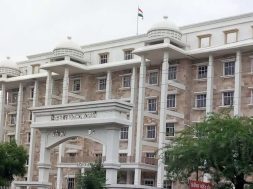
Solar index of site location, architectural orientation, among key factors to be planned for ensuring maximum exposure for panels towards the south.
Rooftop photovoltaic solar power (RTPV) systems have been around for over a decade in India. Initially, RTPV were only operated with the help of a battery, but over the last decade, there has been tremendous amount of development in solar power sector. Now, one can connect RTPV directly with the grid. The excess power generated is exported back to the grid network of the power supplier and one gets full benefit of the exported power in the monthly electricity bill. This phenomenon is also known as ‘net metering’. These types of systems are known as on – grid RTPV systems.
Designing solar-powered buildings
Different components that makes PV solar system
Following are the considerations by Animesh Manek, Founder & Director, Avishakti Rooftop Solar Pvt Ltd for designing new buildings integrated with PV solar power.
• PV module’s function is to absorb sunlight and generate power. This power is in the DC form.
• On-grid solar inverter also known as the brain of the RTPV system. Its multiple functions are to extract maximum power from the PV modules, convert the DC power from PV modules to AC power to make it usable in his/her homes, conduct import and export of power between solar system and the grid network of the power supplier. This will ensure that power requirements of the building are always met, turn itself off in the case of a power supply failure. This is a safety feature to prevent hazards for the technicians working on the power supply lines. Also known as anti-islanding.
• Safety devices to ensure safe operation of the system throughout its lifetime.
• DC cables and AC cables serve the purpose of transferring the power from PV modules to the inverter and from the inverter to the power supply metre respectively.
• Earthing and lightning arrestors will prevent any kind of shocks and fires respectively.
The above mentioned components are connected in a specific way to make an optimum system. To assist with the optimum connection method, it is necessary to design the building roof in a specific manner. The important points are:
• The building roof should have square or rectangular shape and the north south orientation. This will help with aligning PV modules to face true south.
• The building should not have any shadow causing objects on the south facing side of the terrace. Hence, all the shadow causing objects like the lift room, staircase access area and the water tank on the north side. Also, the parapet height should not exceed above 3’6”.
• A wall space of around 12’ wide and 8’ high should be available to place the safety devices and the on-grid solar inverter.
• Electric cable ducts to allow DC cable and earthing cable routing from the PV modules to the on-grid solar inverter. These cable ducts should be made on the terrace in a way that there will be no water logging.
• Electrical cable ducts to allow AC cable and earthing strips routing from the on-grid solar inverter to the society common metre in the metre room.
• Space on top of the highest point to install an additional lightning arrestor for the solar system.
• Three pits having minimum 4’ depth to accommodate earthing rods for the RTPV system on the ground area surrounding the building.
• If the terrace area is required for conducting social gatherings, then it is advisable to make a metal shed roof with its slope facing south direction.
Key consideration for solar-powered buildings
Ar. Prem Nath, Prem Nath & Associates says, “Electrical systems or panels (incl. bi-directional metres) are planned to ensure optimum utilisation of power or uploading the same back to the grid.” One of the company’s green platinum rated campuses (Cygnus World School, Vadodara) is so planned that the south faces of the class rooms have over hangs to give shade, while the north face provides with natural north-light and the terraces are fitted with roof top solar panels, solar water heaters, etc. Similarly, a township at Punjab (HMEL Township, Bathinda) is planned with rooftop solar water heaters, solar panels, and solar street lights and is able to generate enough solar power to upload the same back to the grid.
Aesthetically appealing
Making systems attractive
According to Animesh, “Solar panels essentially have been manufactured to be efficient and functional. Aesthetics have never been considered in solar panels besides efficiency and functionality, resulting in less people adopting solar panels apart from the high upfront cost.”
There are some approaches towards making them look aesthetically more pleasing to the eye viz. design the PV modules to look like the materials used to make roofs. The technological innovations in this respect are at different stages of development. Some examples are roofing tiles shaped panels, frameless panels, transparent glass panels and spray paint panels. Make the terrace of the building covered with solar panels in such a way that it looks like an integral part of the building. This method is also known as Building Integrated Photovoltaic (BIPV).
These methods will certainly make the solar- powered buildings more aesthetically appealing. “I understand the options are limited at present and costly to implement. Hence, I would like to take this opportunity to invite architects for collaboration to come up with better options,” says Animesh.
Balance between aesthetics and sustainability
Ar. Prem Nath said, “Exposure to technologically advanced products has increased, given rising awareness for renewable resources and promotion of solar power all over the globe.”
What holds in future is aesthetically pleasing facades. A hotel in Mumbai has been planned with PV films being fixed at the south-facing glazed facade (solar facades). Thus, the occupant is able to see through glass. However, the facade is collecting solar energy all day long.
Similarly, a commercial tower in Gujarat International Finance Tec-City has been planned in a way that the building top feature is planned with solar panels not only collecting solar energy all day but also giving shade to the roof top terrace below. Both these projects are green platinum rated.
Aesthetics have never been considered in solar panels besides efficiency and functionality, resulting in less people adopting solar panels apart from the high upfront cost.
Animesh Manek, Founder & Director, Avishakti Rooftop Solar Pvt Ltd
Exposure to technologically advanced products has increased, given rising awareness for renewable resources and promotion of solar power all over the globe.
Ar. Prem Nath, Prem Nath & Associates
40
Cookie Consent
We use cookies to personalize your experience. By continuing to visit this website you agree to our Terms & Conditions, Privacy Policy and Cookie Policy.









